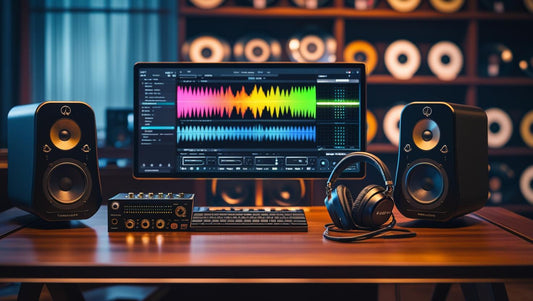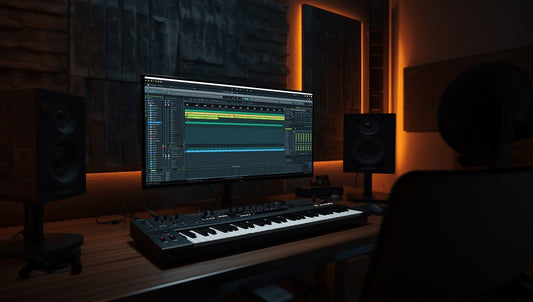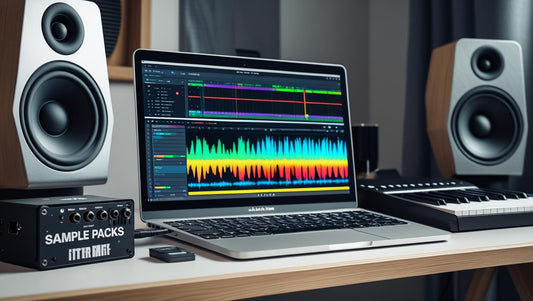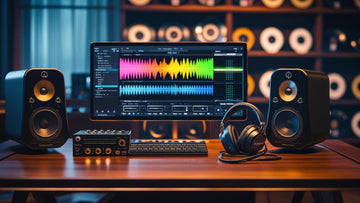Why Is Pop Music So Popular? Culture, Trends & Psychology
Pop, short for “popular music,” is designed for one clear purpose: mass cultural reach. Unlike niche genres, pop thrives on catchy hooks, simple structures, and universal themes that resonate with the widest possible audience.
Its dominance is clear in every corner of modern music—from topping global charts to dominating streaming platforms and going viral on social media. No other genre has been as consistent in shaping trends and capturing attention.
But why exactly is pop music so popular? The answer lies at the intersection of culture, psychology, and technology. These three forces work together to make pop the world’s most influential and accessible genre.
The Definition of Pop Music Popularity
When we talk about “pop,” we’re really talking about two layers of meaning. On one hand, pop is a genre in its own right, with defining traits like polished production, catchy hooks, and universal themes. On the other, “pop” simply means whatever is most mainstream and widely consumed at a given moment.
One of the biggest reasons for pop’s staying power is its adaptability. Pop music has never been confined to a single sound—it borrows freely from other genres like rock, hip-hop, R&B, EDM, and even classical. Each decade reshapes the definition of pop, yet it always keeps its essence: a sound designed for the masses.
At its core, pop is a formula for accessibility. It strips music down to simple, repeatable structures, emotional storytelling, and memorable melodies. This makes it easy for audiences across cultures and generations to connect instantly.
Historical Path to Popularity
Pop music didn’t just appear overnight it grew alongside cultural shifts and new technologies, each era pushing it further into the mainstream.
1950s–60s: The Birth of Pop Idols
This was the age of early icons like Elvis Presley and The Beatles, who transformed music into a global phenomenon. Teen idols became cultural symbols, and “pop” cemented itself as music for the masses.
1980s: MTV and the Rise of the Superstar
The launch of MTV revolutionized music promotion. Music videos became as important as the songs themselves, and stars like Michael Jackson and Madonna redefined what it meant to be pop royalty.
2000s: Global Pop Explosion
The era of boy bands, Britney Spears, and international crossover hits pushed pop further onto the world stage. Pop stars weren’t just musicians—they were full-fledged brands with massive cultural influence.
2010s–Present: Streaming & TikTok Era
Today, platforms like Spotify, YouTube, and TikTok are the engines of pop success. Viral hooks, dance challenges, and algorithm-driven playlists shape how pop songs are written and consumed, keeping the genre always at the center of global attention.

Cultural Forces That Drive Pop Music’s Popularity
Pop music isn’t just about the songs—it’s about the culture that surrounds them. The genre thrives because it taps into identity, aspiration, and global connectedness.
Celebrity & Idol Culture
Pop stars are more than musicians; they are icons of style, influence, and aspiration. From Elvis and Madonna to BTS and Taylor Swift, pop artists embody cultural moments, shaping how fans see themselves and the world.
Fashion & Lifestyle
Pop has always been a trendsetter. Hairstyles, clothing, makeup, and even slang often start with pop artists before spreading to wider culture. Think Madonna’s ’80s looks, Lady Gaga’s bold fashion, or K-pop’s polished style inspiring global fans.
Globalization of Pop
What was once U.S. and U.K.-centric is now a global wave. K-Pop dominates charts, Latin Pop has crossed into mainstream playlists, and Afro-Pop is rapidly influencing global rhythms. Pop is now a worldwide language.
Media & Marketing Power
Behind the stars are major labels, PR machines, and viral campaigns. With the rise of social media and TikTok, pop songs are marketed not just as music but as experiences and shareable moments, fueling their reach across audiences.
Psychological Appeal of Pop Music
The popularity of pop isn’t just cultural—it’s rooted in psychology. Pop songs are designed to stick, resonate, and connect with listeners on a deep, emotional level.
Catchiness
Pop thrives on repetition and hooks, crafting those unforgettable “earworms” that loop in your head long after the song ends. This stickiness is intentional and key to its mass appeal.
Relatability
The themes of pop are universal and timeless—love, heartbreak, joy, empowerment, and fun. By tapping into emotions everyone experiences, pop bridges cultural and linguistic barriers.
Emotional Connection
Familiar structures and melodies trigger feelings of comfort and dopamine release, making pop music a go-to for emotional highs, nostalgia, and everyday soundtracks.
Simplicity
Unlike more complex genres, pop’s easy-to-follow lyrics and melodies make it effortless to sing along, remember, and share. This accessibility is a major reason it dominates radio, streaming, and social media trends.
Musical Traits That Make Pop Popular
Beyond culture and psychology, pop music’s structure and sound are engineered for mass appeal. Its musical traits make it instantly recognizable and easy to consume.
Verse–Chorus Structure
Most pop songs follow a predictable verse–chorus pattern. This familiarity helps listeners anticipate what’s coming next, making the song feel comfortable and engaging.
Short Song Length
Pop songs are typically 2–4 minutes long, designed to fit radio formats and streaming attention spans. The brevity makes them easy to replay, boosting chart performance and popularity.
Melodic Repetition & Polished Production
Pop thrives on catchy melodies, repeated phrases, and polished, radio-friendly production. Every element—from vocals to instrumentals—is fine-tuned to maximize appeal.
Incorporation of Trending Genres
Pop doesn’t stay static. It borrows from whatever genre is trending—hip-hop beats, EDM drops, Afrobeat rhythms, or Latin grooves—ensuring it always feels fresh and relevant to the moment.

Role of Technology & Media in Pop Popularity
The rise of pop music is inseparable from the evolution of media and technology. Each new platform has amplified its global reach.
From Radio to TikTok
Pop has always adapted to the dominant media of its era—from radio airplay and MTV music videos to iTunes downloads, YouTube virality, and today’s TikTok clips and Spotify playlists.
Algorithm-Driven Success
Streaming platforms and social media algorithms now push short, catchy, high-engagement songs to the top. This rewards artists who create instantly shareable and replayable content.
Hit Factories & Producers
Behind many pop anthems are powerhouse producers like Max Martin and Dr. Luke, who reverse-engineer hits using proven formulas of melody, rhythm, and structure.
Fandom Amplification
Dedicated fandoms—like the BTS ARMY or Swifties—use social media to organize streams, share content, and amplify visibility, turning artists into global phenomena.
Global Spread of Pop Music
Pop music’s reach has expanded far beyond its Western roots, turning it into a truly global phenomenon.
English as the Dominant Language
For decades, English-language pop songs dominated mainstream charts, with U.S. and U.K. artists setting global trends.
The Rise of K-Pop
In recent years, K-Pop has exploded worldwide, with groups like BTS and Blackpink leading the charge. Their polished visuals, tight choreography, and fan-driven marketing have redefined what global pop success looks like.
Latin Pop Explosion
Artists like Bad Bunny, Shakira, and J Balvin have pushed Latin Pop into the global spotlight, blending reggaeton, trap, and traditional Latin sounds with mainstream appeal.
Cross-Cultural Collaborations
Global hits are increasingly powered by collaborations across cultures—from Justin Bieber teaming up with Luis Fonsi on “Despacito” to Western stars featuring in K-Pop or Afrobeat tracks.
Criticism & Debate Around Pop Popularity
Pop music, while massively successful, is not without its critics.
“Too Commercial” and “Formulaic”
One of the most common criticisms is that pop music is engineered for sales rather than artistry. Critics argue that repetitive structures, Auto-Tune, and predictable hooks make it “shallow” compared to more experimental genres.
The Art vs. Industry Debate
This sparks an ongoing debate: is pop a true art form or simply a product of the music industry? While some see it as manufactured, others argue that creating music that resonates with millions worldwide is a unique kind of artistry in itself.
Dominance as Proof of Influence
Interestingly, the very fact that pop is criticized so often proves its cultural dominance. Pop sets the standard that other genres define themselves against, making it central to conversations about music and culture.

Future of Pop Music Popularity
The future of pop looks more dynamic than ever.
AI in Music Creation
Artificial intelligence is beginning to play a role in songwriting, beat-making, and vocal synthesis, raising questions about creativity and originality.
Streaming-Driven Structure
With platforms like Spotify, YouTube, and TikTok shaping listening habits, songs are getting shorter and hook-driven, designed to capture attention within seconds.
Genre-Fluid Pop
Pop is becoming increasingly genre-blended, pulling elements from hip-hop, EDM, R&B, Afrobeat, and even classical crossovers. This fluidity makes it harder to define, but easier to consume worldwide.
Localized Pop Movements
From K-Pop in Korea to Afro-Pop in Africa and Latin Pop in the Americas, local pop movements are finding global audiences, proving that pop’s future will be both international and decentralized.
Frequently Asked Questions
Q1: Why is pop music so catchy?
Pop music is built on repetition, simple structures, and memorable hooks. These elements trigger memory recall, making songs stick in listeners’ minds after just one or two plays.
Q2: Why does pop music dominate streaming charts?
Streaming platforms reward high-engagement songs. Because pop music appeals to the broadest audience, algorithms often push it to the top, reinforcing its global visibility.
Q3: Why do young people prefer pop music?
Pop reflects youth culture, fashion, slang, and emotions like love, heartbreak, and self-expression. Its adaptability makes it the default soundtrack for new generations.
Q4: Is pop music popular worldwide?
Yes. Pop is the most internationally recognized genre, with dominance in the U.S. and U.K. alongside global waves like K-Pop, Latin Pop, and Afrobeat.
Q5: Will pop music always be popular?
As long as it continues to evolve with culture, psychology, and technology, pop music will remain the most dominant and accessible genre worldwide.
Conclusion
Pop music remains the world’s most popular genre because it knows how to adapt—to cultural shifts, to technology, and to human psychology. Its ability to reinvent itself while staying accessible ensures it will continue to dominate global music.
At its heart, pop is more than just a sound; it’s a reflection of who we are as a society at any given time. Whether you grew up on Beatles records, 90s boy bands, or viral TikTok hits, pop has been the soundtrack of everyday life.
Call to Action: Take a moment to explore pop playlists across different decades—or reflect on your own favorite pop songs—to see how this ever-changing genre has shaped your personal connection to music.
No comments







0 comments